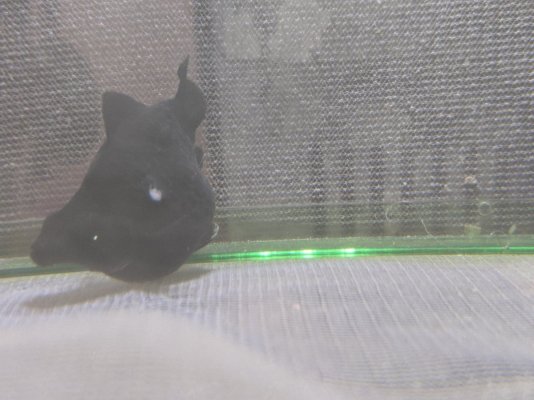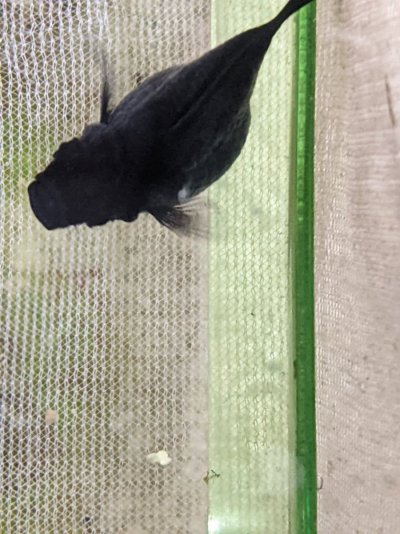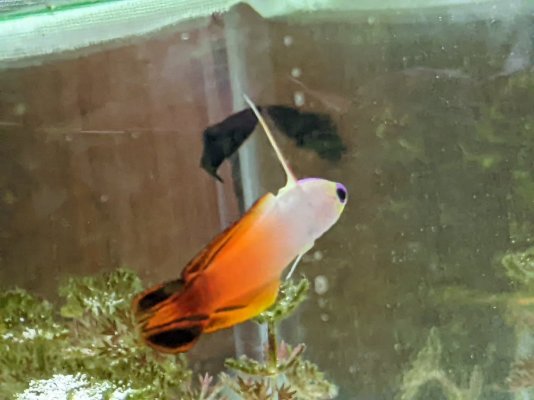Background: 9 month old nano tank (being used as a qt tank, but like it to look nice as well). Live rock with mushrooms, and pair of black mollies in it from the beginning. Two months ago I added a firefish, yellow wrasse, turbo snail and astrea snail. The yellow wrasse and the astea snail did not survive a week. Not sure why. Was planning to hold firefish in this tank for at least another month or so before adding to my main tank. Everything seemed to be going well. Noticed a few days ago that my female black molly has one white "spot" on her side. Also seems like the area around her anus is also white. She seems to be acting and eating normally. I put her into a breeding net inside the tank so that the male would leave her alone for a bit, and she can rest. The male molly and the firefish appear to be fine.
I went through the Humble Fish listing of all possibilities. Nothing I've read seems to cover this. Does anyone have any idea what this could be and then how to treat?


I went through the Humble Fish listing of all possibilities. Nothing I've read seems to cover this. Does anyone have any idea what this could be and then how to treat?




















